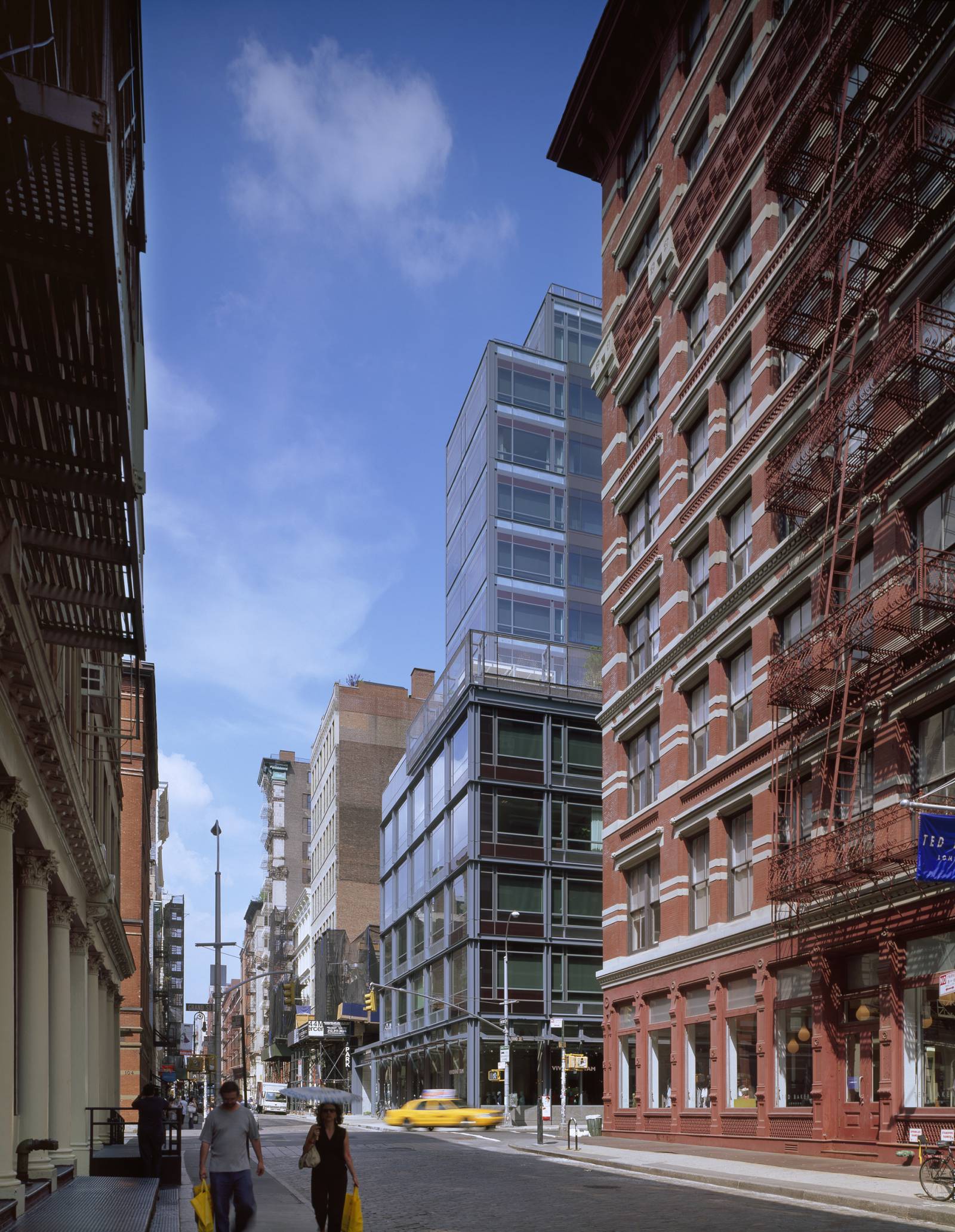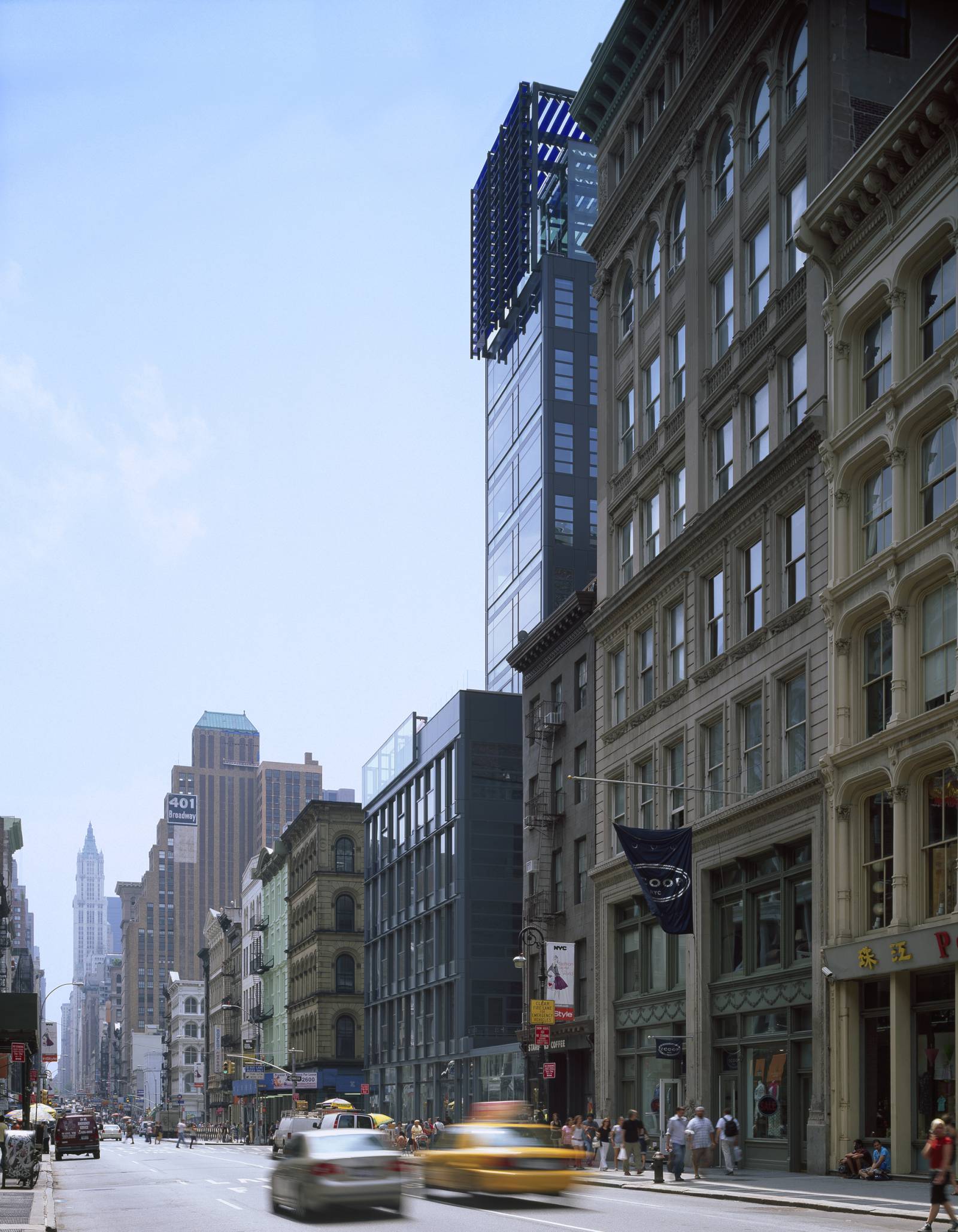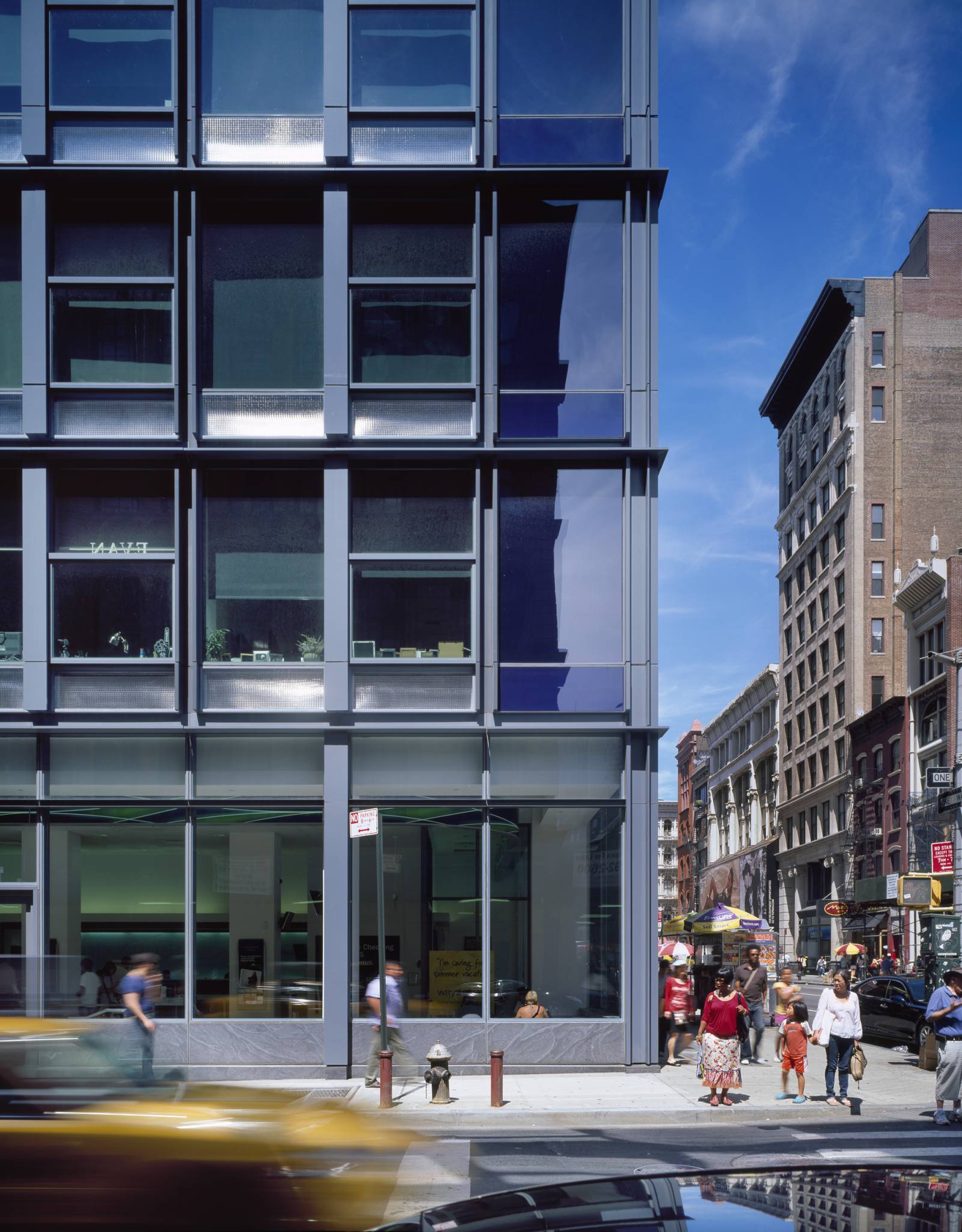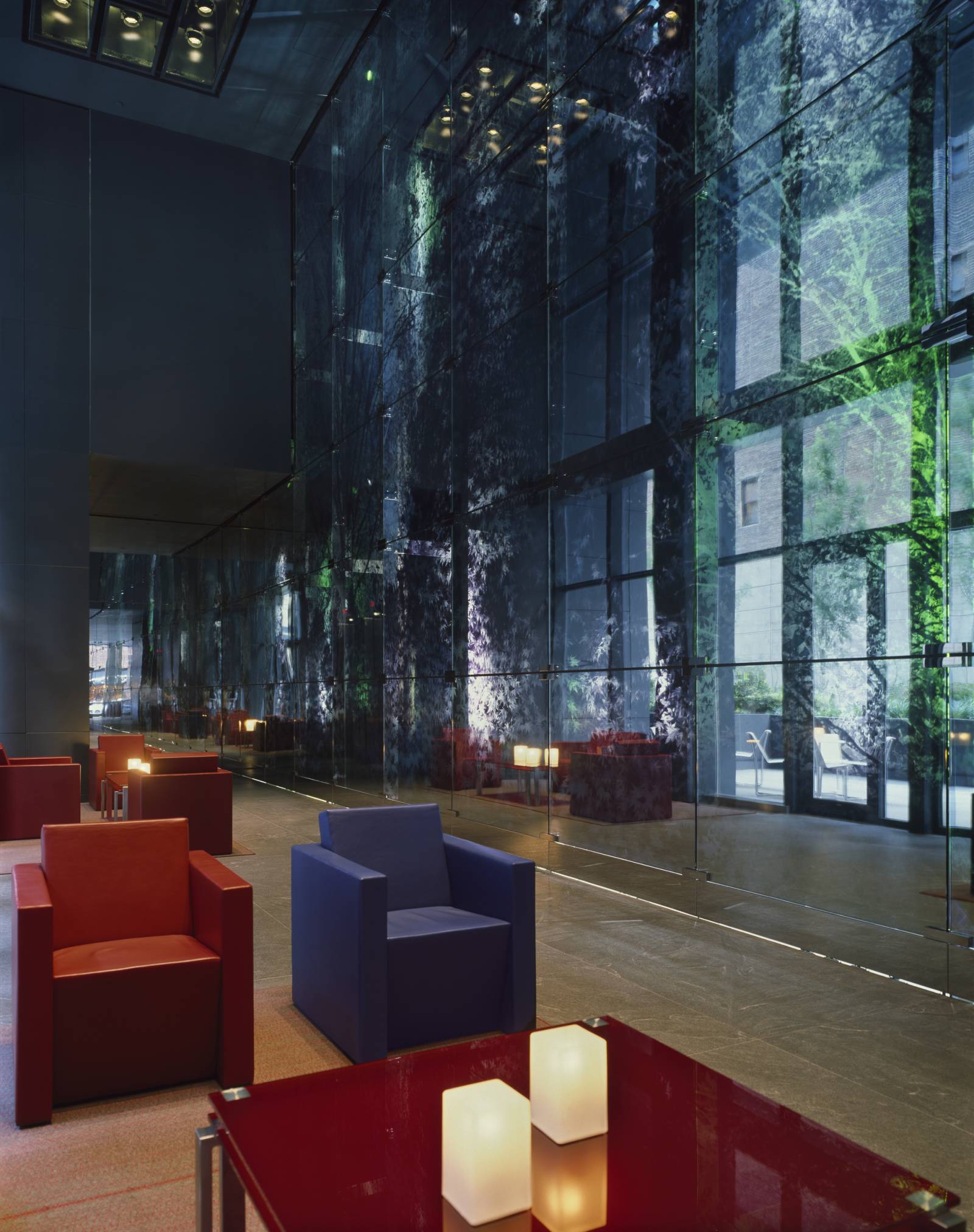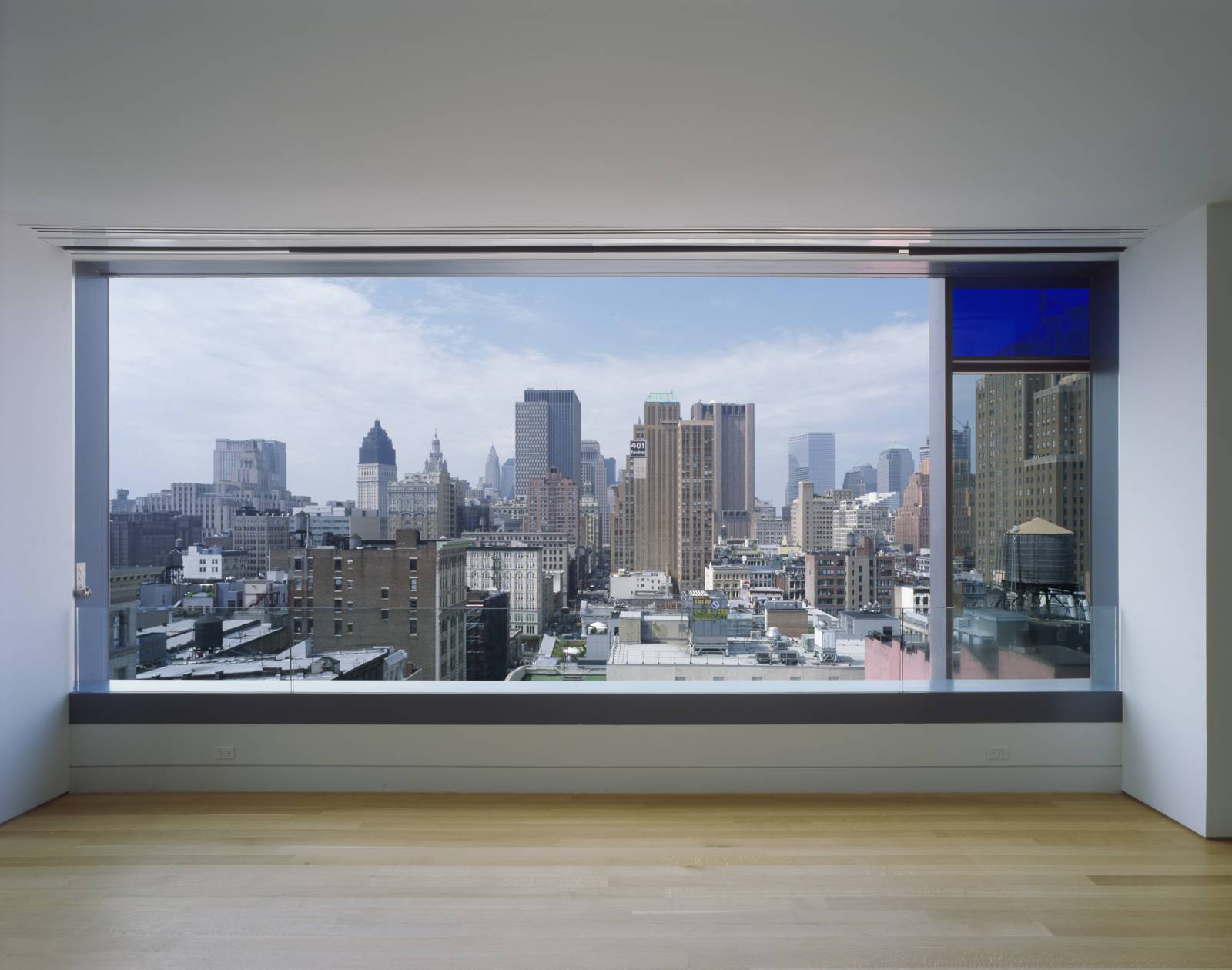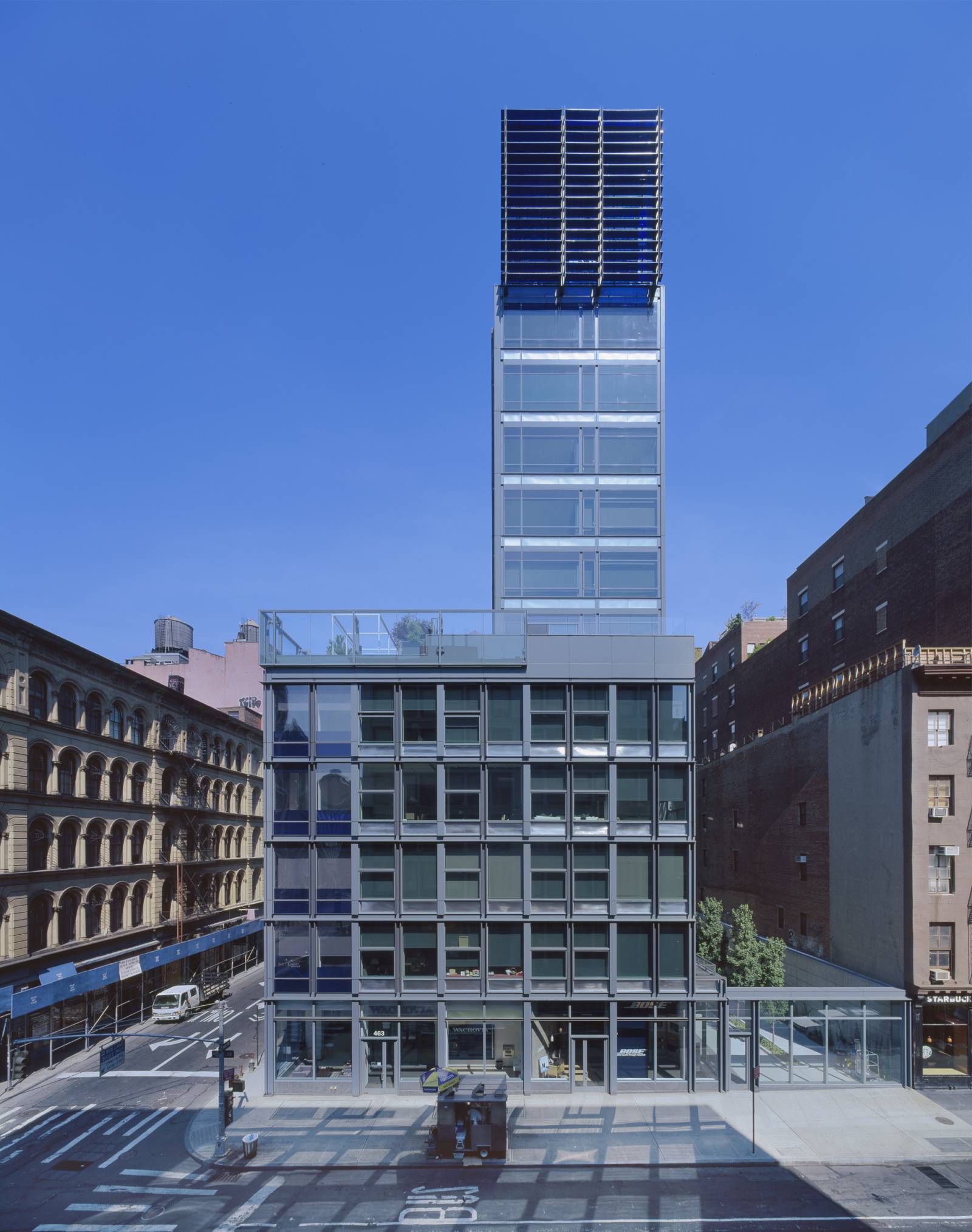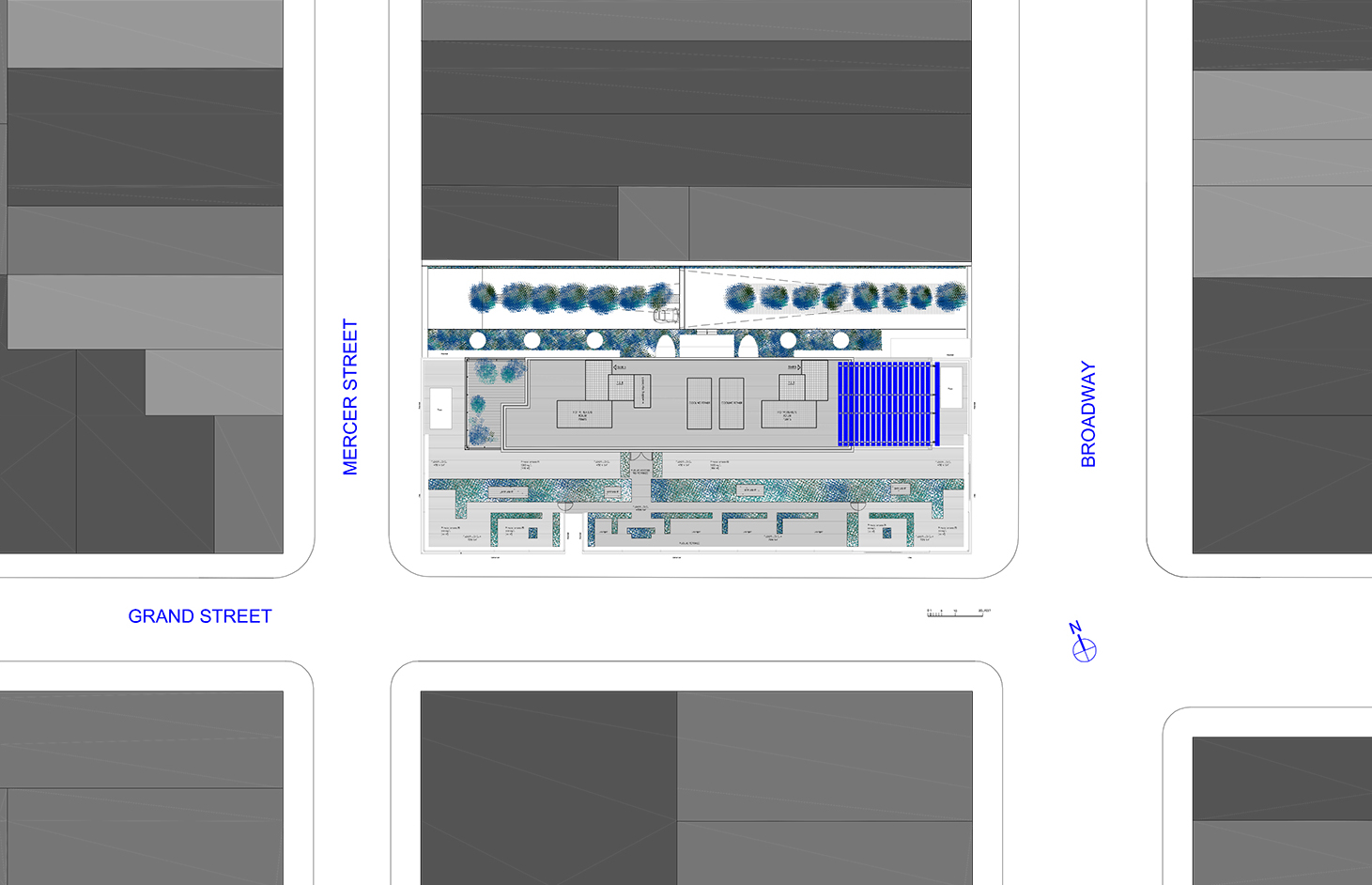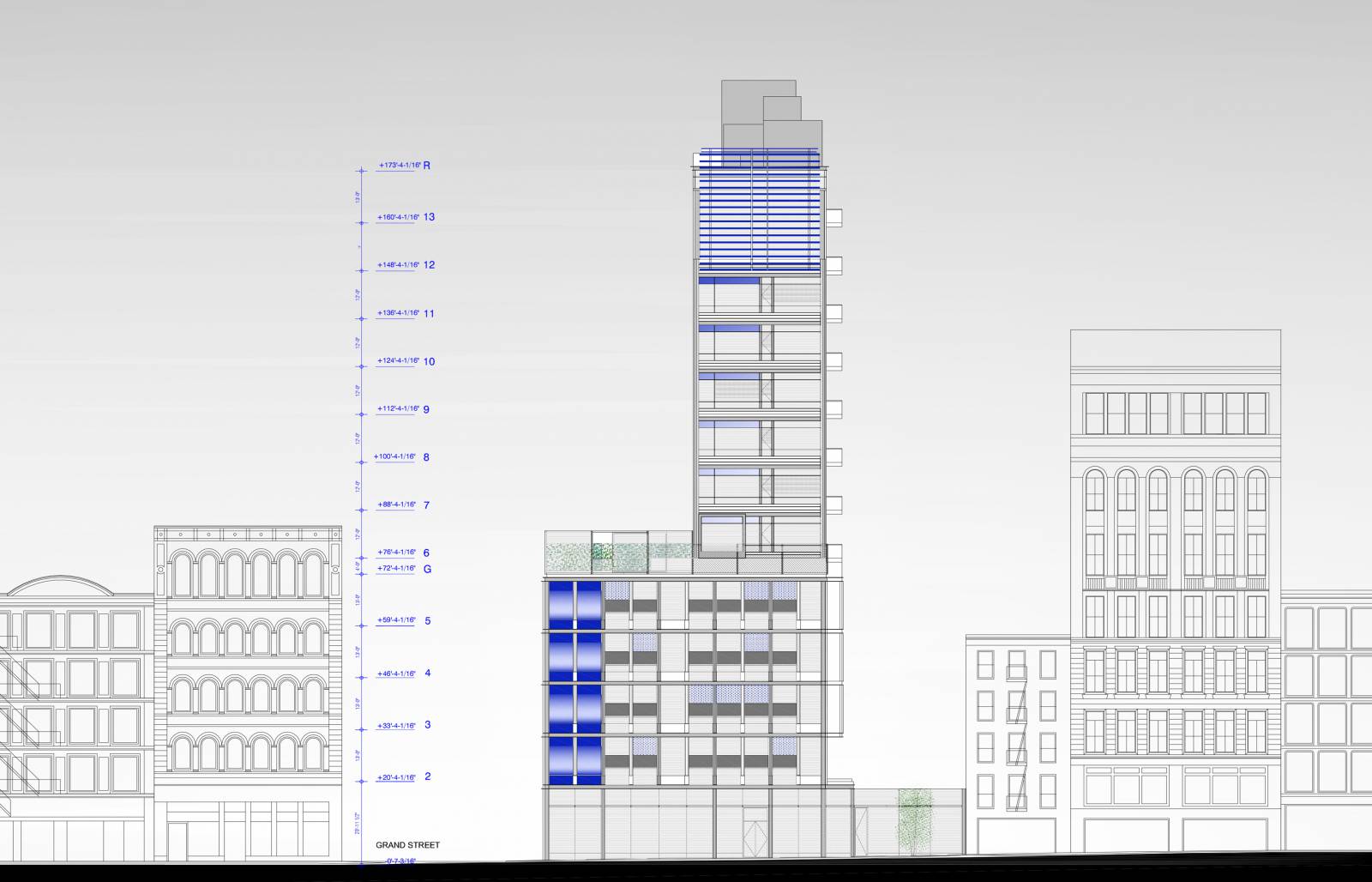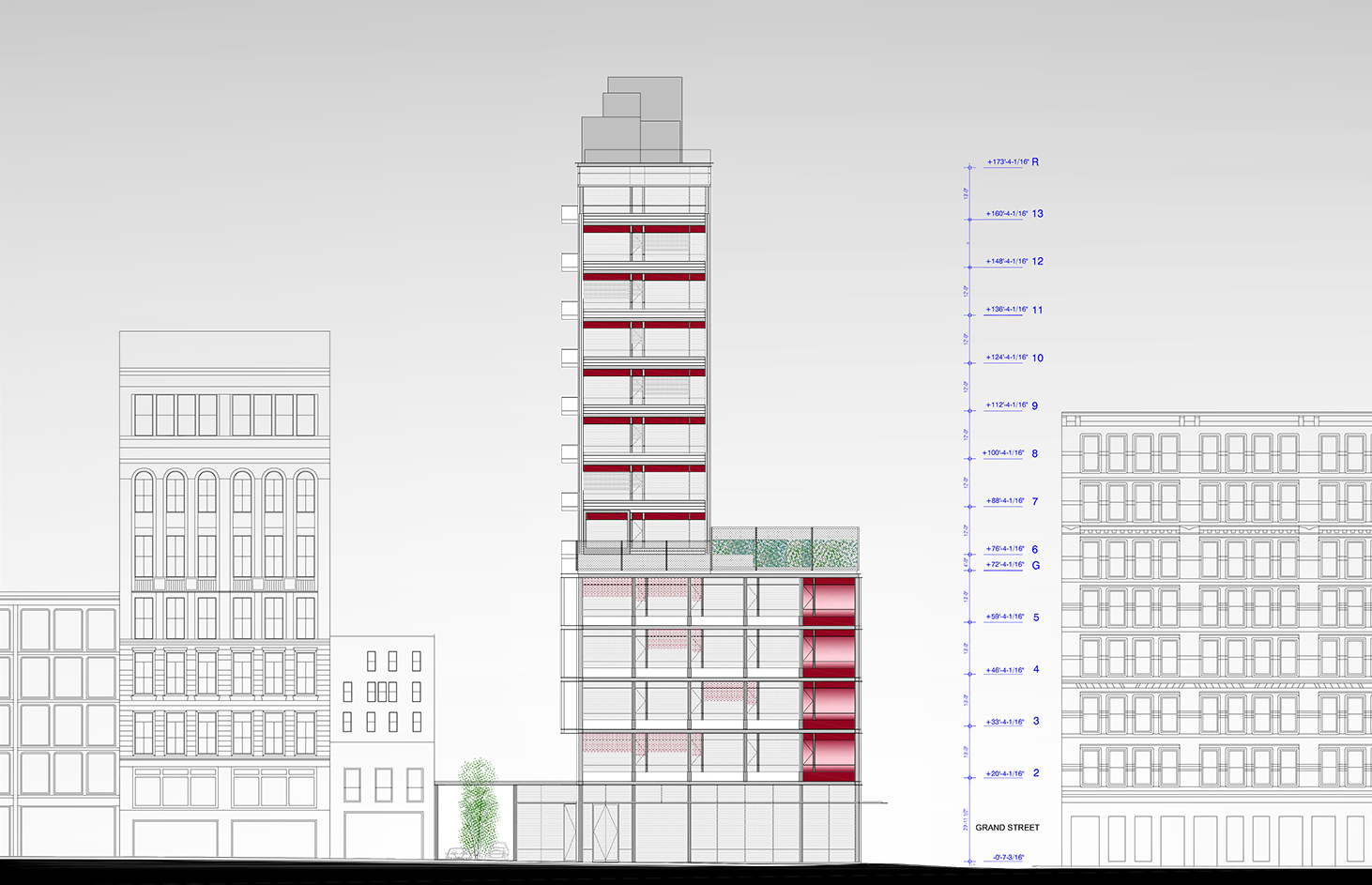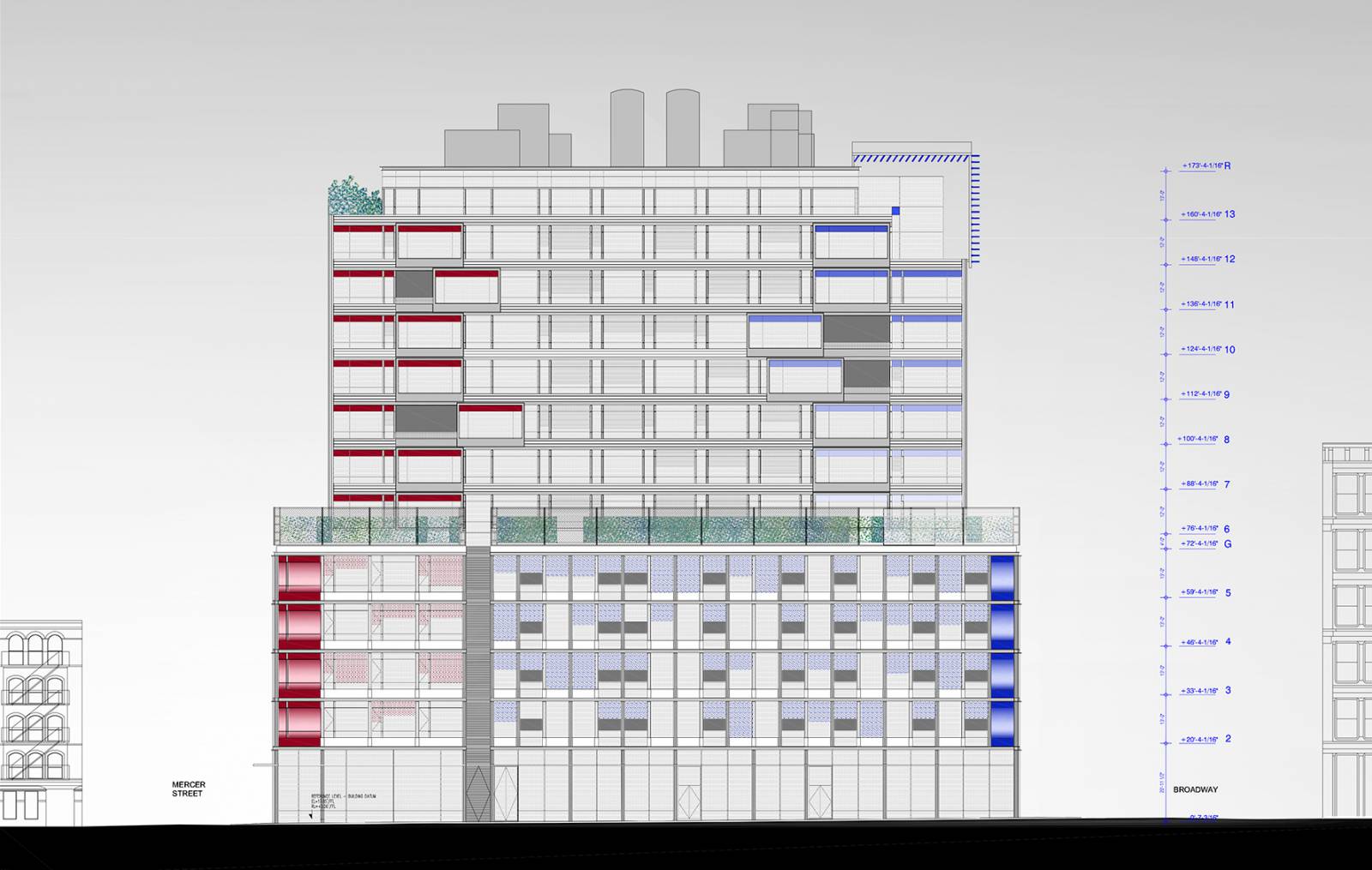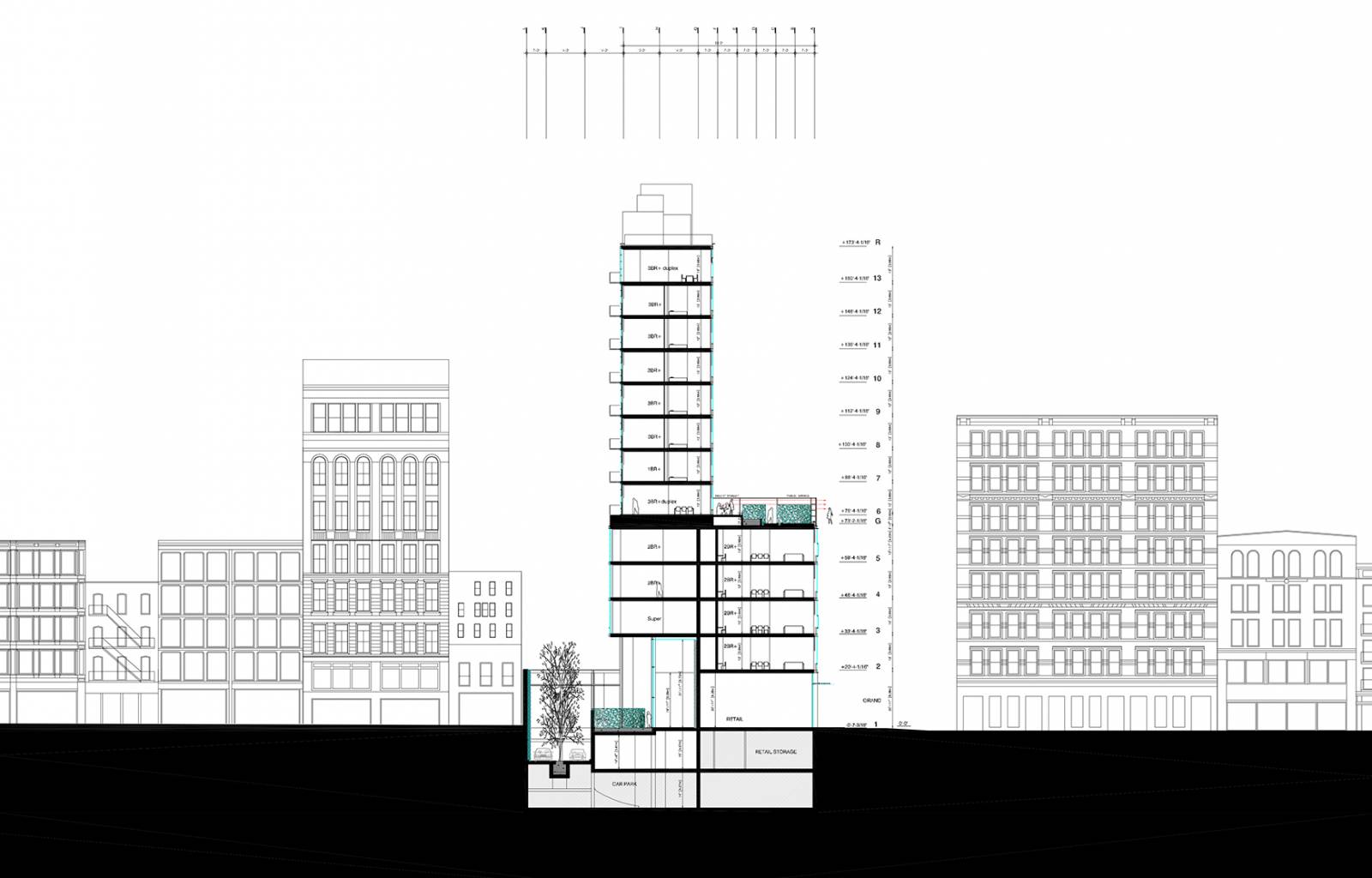- Previous project: Aquatic Complex “Les Bains des Docks”
- Next project: Urban renewal project of l’Île Seguin
40 Mercer
- New York, USA
Located at the corner of Mercer, Grand and Broadway, the residential building at 40 Mercer was initially designed as a hotel. This change occurred after the 9/11 events, but the fundamentals of my project were in place, based as they were on the site’s intrinsic qualities. The specificity of the site resides in the fact that three of its sides are free, a very rare feature in New York. An obvious plan for the site would have been to build against the neighbor building, but I opted to keep the two buildings apart and create a garden.
The adjacent buildings are representative of SoHo’s industrial architecture. I analysed their proportions, the composition of the façades and the materials used, with a view to producing a resolutely contemporary type of architecture that does not try to be different but rather seeks to blend in so as to better emphasize the qualities of its environment.
The proportions of the two stacked structures making up the building are based on those of the buildings nearby: the lower structure, or base, is at the same average height as the directly adjacent buildings, while the upper structure, or tower, is of the same height and width as the Broome Building, located at the Northern end of the block. The tower to the East is topped with a sculpture of blue glass blades, echoing the Broome building cornice.
I then added an extra opening by cutting a vertical rift through the base, which forms a pathway from Mercer to Broadway, from the red brick façades to those painted white, grey and blue, from the quiet elegance of SoHo to the frenzied pace of Broadway.
The overall mode of expression here is that of a woven dark grey metal structure. But the various parts take on a very different appearance according to their position within the site: the West wing façades, on Mercer, are made up of large, horizontal plate glass windows, with dark red glass on the corners. On the East side, the façades’ weft is tighter, punctuated with inverted sash windows and midnight blue glass panes. The tower’s surface is smoother, with its window breasts glistening in the sunlight; the continuity is broken by two sets of extra large sliding windows, reminiscent of garage doors and transforming the living rooms into loggias.
The back façade of the building has a regular pattern of opaque or transparent panels, reminiscent of the neighborhood’s brick party-walls.
Inside is a range of some ten different lay-outs, from 2-room apartments to a duplex of over 300 sq m, placing residents at the heart of this strikingly beautiful city. On the lower levels, the façades opposite act as ideal wallpaper within the picture windows, each frame naturally resonating with its counterpart in the patterns across the way, while the whole of the Downtown Manhattan skyline acts as scenery for the flats of the tower. But for the inhabitants at 40 Mercer, my intent was to focus on all five senses: when they open the vast windows, they are momentarily immersed in the sounds of sirens, escape air conditioning to breathe in the sea air, and leave the protective atmosphere of their loft to indulge in the scents of Canal Street. With Manhattan, the World-Island, unfolding at their feet.
Jean Nouvel
